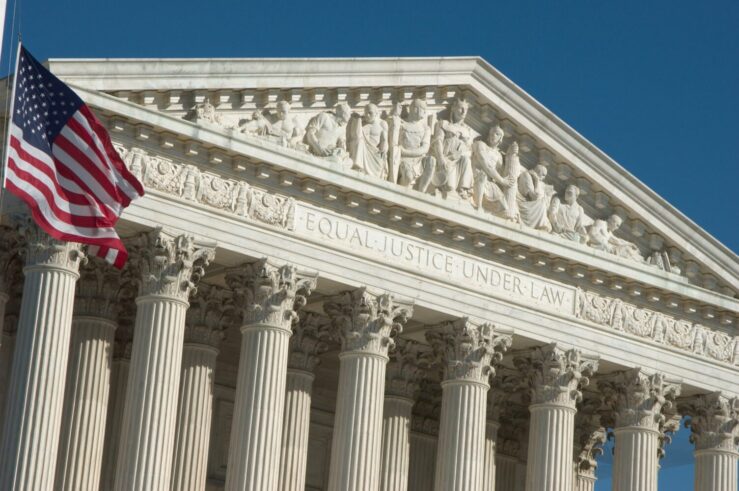A couple of weeks ago, I argued that the Supreme Court’s decision upholding the constitutionality of the Affordable Care Act will ultimately doom the Act to failure. The problem, I argued, is that the ACA’s guaranteed issue and community rating provisions create a perverse incentive for young, healthy people not to buy insurance until they need it, and the Supreme Court’s reasoning that the penalty for failure to carry insurance is a “tax” because it is small relative to the price of insurance precludes Congress from increasing the no-insurance penalty to the point at which it prevents young, healthy people from dropping coverage. As those folks remove themselves from the pool of insureds, insurance premiums (reflective of the per capita expected health care costs of the covered population) will rise, leading even more relatively healthy people to exit the pool and thereby exacerbating the “healthy flight” problem. In short, guaranteed issue (i.e., insurers have to insure you regardless of your health) + community rating (i.e., insurers can’t charge you more if you’re sick) + constitutionally limited low penalties for failure to carry insurance (a result of the Supreme Court’s reasoning in NFIB v. Sebelius) = adverse selection that will drive insurance premiums through the roof.
Some readers noted flaws in my analysis. One correctly observed that I had ignored the premium support subsidies the ACA provides for lower- and middle-income people (those earning from 1.33 to four times the Federal Poverty Level). Those subsidies may prevent many younger, healthier people from failing to buy or dropping coverage because the no-insurance penalty will exceed the out-of-pocket cost of insurance (i.e., the policy price minus the amount of the federal subsidy). Someone else observed that I had ignored the ACA’s employer mandate, which requires employers with more than 50 employees to provide insurance coverage or else pay a penalty for each employee that buys her own subsidized insurance on a state exchange. Since most people get their insurance coverage through their employers—an unfortunate result of the federal tax code—perverse incentives in the individual insurance market might not be that significant.
Unfortunately, neither the ACA’s premium support subsidies nor its employer mandate will save the Act from failure. Here’s why:
Premium Support Subsidies
The ACA’s premium support subsidies are unlikely to prevent substantial “healthy flight” for two reasons. First, they’re too small. When a young, healthy person is deciding whether to buy insurance now or to hold off, pay the penalty, and sign up for coverage when her family needs it, she will compare the no-insurance penalty with her out-of-pocket expense for a subsidized policy. If the penalty exceeds out-of-pocket expenses (policy price minus available subsidies), then it makes sense to purchase insurance. Otherwise, it makes sense to pay the “tax” until insurance coverage is needed, at which point it will be available (guaranteed issue) at rates not reflecting the family’s particular health care needs (community rating). To assess the risk of adverse selection, then, we must consider the magnitude of penalties, expected insurance premiums, and available subsidies.
The ACA provides that the penalty for failure to purchase insurance shall be the greater of:
- A flat dollar amount per person (for adults, $95 in 2014, $325 in 2015, $695 in 2016 and beyond, adjusted for inflation; for children, half the adult penalty), with the flat amount per family never exceeding three times the adult amount; or
- A percentage of income (1% in 2014, 2% in 2015, and 2.5% in 2016 and beyond) above the tax-filing threshold (estimated to be around $10,250 for single filers and $20,500 for joint filers in 2016).
For four-person families eligible for premium support subsidies (those earning from 133% to 400% FPL), the flat rate will always exceed the income percentage, so the maximum penalty will be $2,085 (adjusted for inflation from 2016 dollars). Insurance premiums will be substantially higher than that amount. According to Kaiser Family Foundation estimates, the 2014 price of “silver level” (70% actuarial value) insurance coverage for a family of four living in a moderate cost region will range from $10,108 for a family headed by a 30 year-old to $19,750 for a family headed by a 55 year-old. Since the ACA mandates only “bronze level” (60% actuarial value) coverage, so we can estimate prices of qualifying policies to be about 86% (60/70) of those levels, or from $8,693 for the 30 year-old’s family to $16,985 for the family of the 55 year-old.
The important comparison, however, is between the penalty amount ($2,085) and the subsidized price of qualifying insurance. For qualifying individuals and families, the ACA lavishes generous subsidies that are inversely related to income. Even after accounting for available subsidies, though, most families will find it more advantageous to pay the penalty than to purchase insurance.
The following table, based on Kaiser’s Health Reform Subsidy Calculator, shows for different family income levels the maximum income percentage and out-of-pocket dollars the family would have to pay for subsidized insurance, the percentage difference in outlays for the family’s two options (buy insurance or pay penalty), and the family’s likely decision (buy or don’t buy):
|
Family income |
Maximum % of income to be spent on insurance |
Maximum dollar amount to be spent on insurance |
Comparison of insurance expenses |
Likely decision |
|
$35,000 |
3.97% |
$1,388 |
Penalty is 50% more than ins. |
Buy |
|
$40,000 |
4.96% |
$1,982 |
Penalty is 5.2% more than ins. |
Buy |
|
$45,000 |
5.94% |
$2,672 |
Ins outlays are 1.28 times penalty amount. |
Don’t buy |
|
$50,000 |
6.77% |
$3,385 |
Ins outlays are 1.62 times penalty amount. |
Don’t buy |
|
$55,000 |
7.52% |
$4,135 |
Ins outlays are 1.98 times penalty amount. |
Don’t buy |
|
$60,000 |
8.23% |
$4,937 |
Ins outlays are 2.36 times penalty amount. |
Don’t buy |
|
$65,000 |
8.85% |
$5,751 |
Ins outlays are 2.76 times penalty amount. |
Don’t buy |
|
$70,000 |
9.47% |
$6,626 |
Ins outlays are 3.18 times penalty amount. |
Don’t buy |
|
$75,000 |
9.50% |
$7,125 |
Ins outlays are 3.42 times penalty amount. |
Don’t buy |
|
$80,000 |
9.50% |
$7,600 |
Ins outlays are 3.65 times penalty amount. |
Don’t buy |
|
$85,000 |
9.50% |
$8,075 |
Ins outlays are 3.87 times penalty amount. |
Don’t buy |
|
$90,000 |
9.50% |
$8,550 |
Ins outlays are 4.1 times penalty amount. |
Don’t buy |
|
$95,000 |
No maximum. |
Policy cost |
Ins outlays (dependent on ages) significantly exceed penalty amount. |
Don’t buy |
|
$100,000 |
No maximum. |
Policy cost |
Ins outlays (dependent on ages) significantly exceed penalty amount. |
Don’t buy |
As the table reveals, at all but the lowest income levels it makes more sense for healthy families to refrain from purchasing insurance and pay the penalty until insurance coverage is needed. In fact, until 2016, even families with the lowest two income levels on the table would be better off foregoing insurance purchases. Because the no-insurance penalties are phased in between 2014 and 2016 (they’re only $285 in 2014 and $975 in 2015), they are initially less than the out-of-pocket cost of a qualifying insurance policy. It is likely, then, that even low-income healthy families will drop out of the insurance pool in 2014 and 2015, driving up insurance premiums for those remaining in the pool.
In addition to being too small, the ACA’s premium subsidies may not be available in many states. As Jonathan Adler and Michael Cannon have demonstrated, the text of the ACA provides for premium support subsidies only on purchases made through exchanges that the states establish. While proponents of the ACA presumably assumed that all states would voluntarily establish such exchanges so as to make subsidies available to their citizens, a great many states (36 at this point) either have declared an intention not to set up a state exchange or have made little movement in the direction of doing so. The IRS has taken the position that the subsidies should also be available through federal exchanges set up as a “fallback” in states that do not establish their own. It insists that expanding the subsidies is consistent with the purpose of the statute. But that’s far from clear. As Adler and Cannon show, the ACA’s legislative history suggests that Congress deliberately provided subsidies only through state-established exchanges in order to encourage states to set up and manage such exchanges. In any event, the statutory language limits subsidies to state exchanges, and courts are generally loathe to exalt a statute’s purported purpose over its clear text, particularly when congressional intent is ambiguous.
Because the premium support subsidies (1) are too small and (2) may not be available in many states, they’re unlikely to correct the adverse selection problem resulting from the toxic combination of guaranteed issue, community rating, and constitutionally constrained low penalties for failure to purchase health insurance.
The Employer Mandate
But what about the fact that the ACA penalizes employers who fail to provide insurance coverage for their workers? Won’t that be enough to prevent large numbers of young, healthy people from failing to purchase or dropping health insurance? No, because the ACA’s subsidy provisions actually encourage employers to drop health plans for lower-income employees, many of whom will not be motivated to purchase insurance on their own.
As we’ve frequently discussed, the federal tax code currently exempts employer-provided health insurance benefits from taxation. That exemption, which does not apply to individually purchased health insurance, amounts to an implicit subsidy percentage equal to the payroll tax rate plus the recipient employee’s marginal income tax rate. Because high-income workers are subject to higher marginal tax rates than are lower-income workers, the subsidy is greatest for them. Moreover, workers earning more than 400% of FPL will get no subsidy to buy insurance if their employer stops providing it. Lower-income workers, by contrast, get less of an implicit subsidy for employer-provided health insurance, are eligible for more generous subsidies on state exchanges if their employer does not provide health insurance benefits, and would therefore prefer to work for employers that do not offer such benefits. Employers competing for workers will respond to these preferences.
Consider, for example, a previously uninsured 45 year-old who earns $35,000 and is required by the ACA to purchase a family insurance policy expected to cost around $15,000 in 2016. If the employer provides the policy, the cash component of the employee’s compensation will fall to $20,000 (benefits generally being a dollar-for-dollar substitute for wages). The employee, however, will not have to pay the approximately $3,400 in federal income, Social Security, and Medicare taxes that would otherwise be due on the $15,000 received as insurance rather than cash. On the other hand, if the employer does not provide health insurance and the employee purchases it on a state exchange, the employee will be eligible for a federal subsidy worth around $13,600. Given the choice between a $3,400 implicit tax subsidy and a $13,600 subsidy on the exchange, the employee would prefer the latter. Now, if the employer employed more than 50 workers and failed to provide coverage, it would be charged a penalty of $2,000 for each worker that purchased subsidized insurance (after the first 30 workers). It would likely choose to pay that penalty, however. It could finance the payment by reducing the employee’s salary by $2,000, and the employee would gladly agree to that arrangement. Even after having his salary diminished by $2,000, the employee would be better off gaining access to the larger government subsidy available only to individuals without employer-provided coverage.
But this analysis shows merely that the ACA encourages employers to drop coverage for lower-income workers. Won’t those workers turn around and purchase subsidized policies on the state exchanges? Perhaps not. For many of those workers, it will make more sense to pay the penalty and wait until health care is needed before purchasing insurance. A one-income family of four headed by a 40 year-old earning $50,000, for example, would have to pay $3,385 for qualifying insurance or incur a no-insurance penalty of $2,085, and it could always purchase insurance on a state exchange—with a $9,900 subsidy—the moment coverage became necessary. Such a family’s income level is low enough that the family is better off without employer coverage yet high enough that the family’s out-of-pocket insurance expenses will exceed the no-insurance penalty. Families in this situation can be expected both to lose employer coverage and to refrain from purchasing insurance on a state exchange.
Of course, all this assumes that premium subsidies are indeed available. For the reasons Adler and Cannon set forth, the ACA seems not to authorize such subsidies in states that fail to establish exchanges and instead rely on the federal government to do so. Employers in such states would have less incentive to drop coverage for low-income employees, but lower income citizens who do not have employer-provided health insurance would not be likely to purchase insurance in such states, where the difference between the non-coverage penalty and the out-of-pocket cost of insurance (without subsidies) would be quite large.
In the end, then, neither the ACA’s premium support subsidies nor its employer mandate is sufficient to prevent the pernicious adverse selection cycle that results from combining guaranteed issue, community rating, and constitutionally limited deficient penalties for failure to carry insurance.




